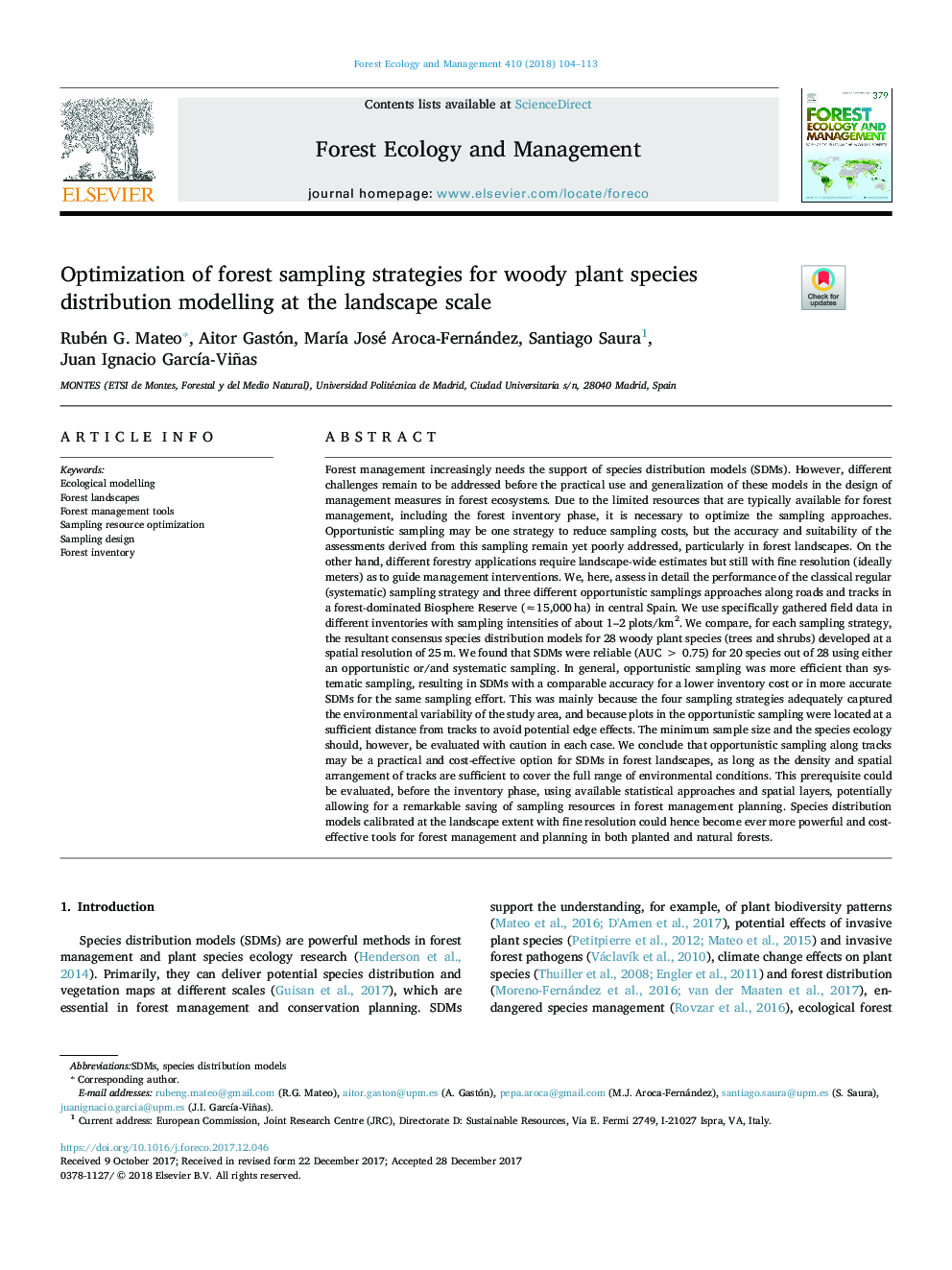| کد مقاله | کد نشریه | سال انتشار | مقاله انگلیسی | نسخه تمام متن |
|---|---|---|---|---|
| 6541857 | 1421348 | 2018 | 10 صفحه PDF | دانلود رایگان |
عنوان انگلیسی مقاله ISI
Optimization of forest sampling strategies for woody plant species distribution modelling at the landscape scale
ترجمه فارسی عنوان
بهینه سازی استراتژی های نمونه برداری جنگل برای مدل سازی توزیع گونه های جنگلی در مقیاس چشم انداز
دانلود مقاله + سفارش ترجمه
دانلود مقاله ISI انگلیسی
رایگان برای ایرانیان
کلمات کلیدی
موضوعات مرتبط
علوم زیستی و بیوفناوری
علوم کشاورزی و بیولوژیک
بوم شناسی، تکامل، رفتار و سامانه شناسی
چکیده انگلیسی
Forest management increasingly needs the support of species distribution models (SDMs). However, different challenges remain to be addressed before the practical use and generalization of these models in the design of management measures in forest ecosystems. Due to the limited resources that are typically available for forest management, including the forest inventory phase, it is necessary to optimize the sampling approaches. Opportunistic sampling may be one strategy to reduce sampling costs, but the accuracy and suitability of the assessments derived from this sampling remain yet poorly addressed, particularly in forest landscapes. On the other hand, different forestry applications require landscape-wide estimates but still with fine resolution (ideally meters) as to guide management interventions. We, here, assess in detail the performance of the classical regular (systematic) sampling strategy and three different opportunistic samplings approaches along roads and tracks in a forest-dominated Biosphere Reserve (â15,000â¯ha) in central Spain. We use specifically gathered field data in different inventories with sampling intensities of about 1-2 plots/km2. We compare, for each sampling strategy, the resultant consensus species distribution models for 28 woody plant species (trees and shrubs) developed at a spatial resolution of 25â¯m. We found that SDMs were reliable (AUCâ¯>â¯0.75) for 20 species out of 28 using either an opportunistic or/and systematic sampling. In general, opportunistic sampling was more efficient than systematic sampling, resulting in SDMs with a comparable accuracy for a lower inventory cost or in more accurate SDMs for the same sampling effort. This was mainly because the four sampling strategies adequately captured the environmental variability of the study area, and because plots in the opportunistic sampling were located at a sufficient distance from tracks to avoid potential edge effects. The minimum sample size and the species ecology should, however, be evaluated with caution in each case. We conclude that opportunistic sampling along tracks may be a practical and cost-effective option for SDMs in forest landscapes, as long as the density and spatial arrangement of tracks are sufficient to cover the full range of environmental conditions. This prerequisite could be evaluated, before the inventory phase, using available statistical approaches and spatial layers, potentially allowing for a remarkable saving of sampling resources in forest management planning. Species distribution models calibrated at the landscape extent with fine resolution could hence become ever more powerful and cost-effective tools for forest management and planning in both planted and natural forests.
ناشر
Database: Elsevier - ScienceDirect (ساینس دایرکت)
Journal: Forest Ecology and Management - Volume 410, 15 February 2018, Pages 104-113
Journal: Forest Ecology and Management - Volume 410, 15 February 2018, Pages 104-113
نویسندگان
Rubén G. Mateo, Aitor Gastón, MarÃa José Aroca-Fernández, Santiago Saura, Juan Ignacio GarcÃa-Viñas,
